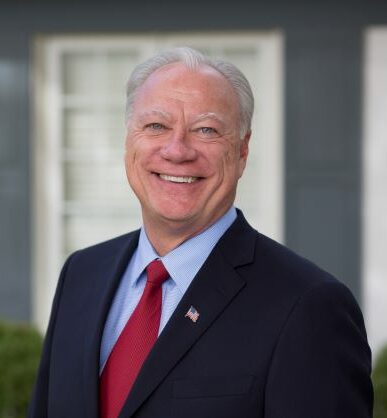
Steve Osborn, P.E.
Founding Principal,
CE Solution
One of the 44 executives I interviewed for the book, Steve Osborn, Founding Principal at CE Solutions, Inc., discussed his involvement in professional organizations. He credits these organizations for attributing to his professional development. This post is an excerpt from my interview with Steve.
Jim: Thinking back to the early part of your career, was there something that you were intentional about in terms of developing skills that later helped you in sales, business development, and marketing?
Steve Osborn: The first company I worked for after I got out of school was very supportive of my participation in ASCE. I was pleased that they supported that. A lot of it was on my own time, but a lot of it was on company time. I learned so much from a leadership standpoint – how to run meetings, communicate, manage, and organize events. I went through all the different leadership roles up to the president and got to experience it from each position, including committee activity.
As my career developed, I reached a point where I was with a different firm, and my responsibilities included managing and overseeing the production of the vertical market. The company I went to was primarily focused on the horizontal or transportation business, and the owner wanted to expand their business into the vertical or building side of things. I came on board to do that. All of sudden, my role changed. I was responsible for finding business, as well as helping grow and manage a division of business for a firm. I had no formal business education – I have a degree in civil engineering.
So I looked for ways to get smart quickly and for mentors. Through ASCE, I got a chance to build relationships with some of the business owners of civil engineering firms around the city. I took advantage of those relationships. I met with them, asked questions, and considered them mentors. During that time, I got introduced to an organization called SMPS (Society for Marketing Professional Services) and immediately saw that it would be a target-rich environment for me as a consultant. There were client opportunities and relationships within that organization.
There was also great educational programming for exactly what I needed, which was marketing professional services. I got involved in SMPS and went through the leadership structure. I’m still active today and also an SMPS Fellow. I go to their national conference every year. It helps me build the business. I learned a lot about how to do business development and marketing in our profession and also how to build a network. It was really important to me at the time of starting my own business because I built it around the knowledge and relationships that I developed through the SMPS organization. I have grown my business by continuing to stay active in that organization – learning and gaining knowledge.
We’re also a member of ACEC and have been for years – ever since I started the business. The difference is ACEC is a firm membership or company membership, whereas SMPS is an individual membership. I was active in ACEC before I started my firm, too, but I really needed to build a client network, and I didn’t see that in ACEC as quickly as I did through SMPS.
Jim: At what point in someone’s career do you think it might be of value to join SMPS?
Steve Osborn: It makes sense for anyone who has a responsibility to develop and maintain client relationships to be a participant in SMPS meetings and learn their best practice in that regard. If you have marketing professionals in your organization that are active members of SMPS and have that body of knowledge close at hand, there can be internal training without the engineers having to go to those meetings. But every once in a while, it certainly doesn’t hurt to expose them to that sort of thing, especially if there’s a good webinar or session on a particular subject about client relationship management – even technical writing.
We talk about SMPS a lot in our organization, and our marketing professionals share knowledge internally. Our senior-level folks are the ones that have a lot more front-line client relationship responsibility – but every once in a while, we’ll take one of our young people to a meeting. We encourage them to participate as well. They aren’t necessarily members, but it doesn’t prevent them from going to a meeting here and there.

